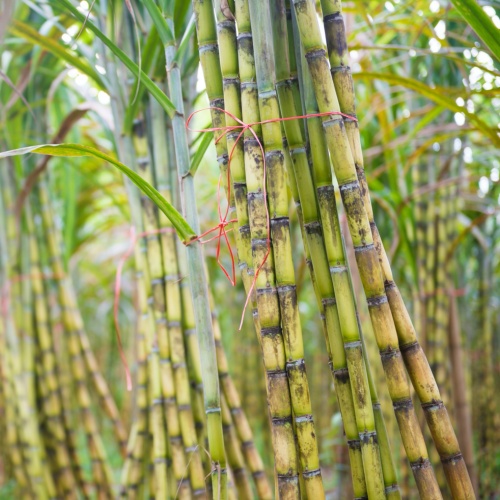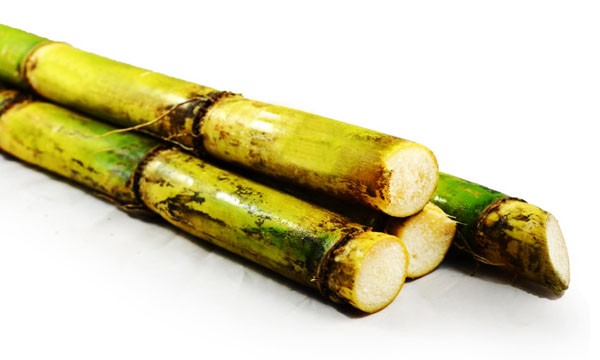Cane Sugar Processing: Ingenious Strategies for High Quality Production
Cane Sugar Processing: Ingenious Strategies for High Quality Production
Blog Article
An Extensive Guide to the Environmental Effect and Sustainability Practices in Walking Stick Sugar Processing
The ecological effect of cane sugar handling offers a complicated selection of difficulties that warrant careful exam. From soil destruction and excessive water use to the carbon footprint linked with cultivation and manufacturing, the consequences of standard methods are far-reaching. What details techniques can be carried out to strike a balance between productivity and environmental stewardship?
Introduction of Walking Cane Sugar Handling
Walking cane sugar handling includes a collection of systematic steps that transform sugarcane into polished sugar. Originally, collected sugarcane is delivered to processing centers, where it undergoes cleaning to remove dirt and particles. Following this, the walking stick is squashed to draw out juice, which is after that made clear by removing impurities with home heating and the enhancement of lime.
The clarified juice goes through evaporation, where water is removed to focus the sugar web content. These crystals are separated from the continuing to be syrup making use of centrifugation, resulting in raw sugar.
The end product is then dried out and packaged for distribution. Throughout this entire procedure, preserving performance and top quality control is essential to make sure the sugar fulfills sector standards. Each action in cane sugar processing not just adds to the final product yet likewise has ramifications for resource usage and waste generation, establishing the phase for conversations on sustainability and ecological impacts connected with sugar production.
Environmental Obstacles of Production
The manufacturing of walking cane sugar provides a number of significant environmental challenges that warrant attention. One main problem is the extensive usage of agrochemicals, including chemicals and fertilizers, which can result in soil degradation, biodiversity loss, and contamination of neighborhood water resources. The overflow from sugarcane fields typically brings these chemicals into close-by ecosystems, interrupting marine life and affecting the health of communities reliant on these water bodies.
An additional challenge is the high energy intake linked with sugarcane processing. The boiling and refining stages call for considerable warm, primarily generated by shedding fossil fuels, adding to greenhouse gas exhausts. Furthermore, the large land area required for sugarcane farming can bring about deforestation and environment devastation, more aggravating climate adjustment and harmful wild animals.
Additionally, the labor practices in some regions raise honest concerns, as employees might deal with inadequate working problems and insufficient earnings. This scenario usually perpetuates a cycle of poverty in neighborhood neighborhoods. Cane Sugar Processing. Dealing with these environmental challenges is critical for creating more lasting practices in walking stick sugar production, ultimately profiting both the setting and the communities included in this industry
Water and Land Usage Effect
Water resources and land application are important components in the cane sugar industry that significantly influence the atmosphere. The cultivation of sugarcane requires substantial water input, with estimates recommending that it can eat approximately 2,000 liters of water per kilogram of sugar created. This intensive use water typically results in deficiency of regional water resources, affecting not just the sugarcane vineyards however likewise bordering ecological communities and neighborhoods that count on the same water sources for farming and residential use.

Moreover, land usage for sugarcane cultivation can lead to logging and the conversion of natural habitats right into monoculture ranches. This method have a peek at this site decreases biodiversity, interrupts regional ecosystems, and adds to soil deterioration. The expansion of sugarcane areas usually trespasses on important agricultural land, developing competition for sources in between food and biofuel production.
Lasting methods, such as optimizing watering techniques and implementing crop rotation, are important to reduce these effects. By taking on extra effective water usage and land management approaches, the walking stick sugar market can reduce its ecological impact, ensuring a balance between farming efficiency and environmental preservation.
Greenhouse Gas Emissions
Greenhouse gas emissions represent a significant ecological problem within the walking stick sugar handling sector, specifically as agricultural methods increase to meet international need. The growing of sugarcane, a plant that prospers in exotic environments, depends heavily on artificial fertilizers and pesticides, which contribute to laughing gas emissions. Furthermore, land-use look at this site adjustments, consisting of deforestation for new sugarcane plantations, launch carbon dioxide stored in vegetation and soil.
During processing, energy consumption is another significant source of greenhouse gas discharges - Cane Sugar Processing. Numerous sugar mills utilize fossil fuels to power machinery and produce warm, resulting in considerable carbon footprints. Additionally, the transport of raw sugarcane and finished products includes layers of exhausts via gas combustion in cars
The advancing result of these emissions exacerbates environment adjustment, positioning risks not just to the setting however also to the long-term stability of the sector. Stakeholders should acknowledge the urgent requirement for comprehensive techniques that deal with these exhausts. This includes evaluating existing farming methods, processing approaches, and transport systems to identify areas for renovation and reduction. Resolving greenhouse gas discharges is necessary for fostering a much more sustainable walking cane sugar industry in a changing environment.

Sustainable Practices and Innovations
Sustainable practices and developments are significantly crucial in the walking cane sugar handling industry as stakeholders seek to minimize environmental impacts while keeping performance. One substantial development is the execution of integrated plant monitoring, which maximizes source usage by incorporating dirt administration, parasite control, and crop turning strategies. This technique boosts return while decreasing chemical inputs and maintaining dirt wellness.
Furthermore, the adoption of renewable power sources, such as biomass from sugarcane residues, has acquired grip - Cane Sugar Processing. By transforming waste products into power, refining centers can minimize their dependence on fossil fuels, thereby lowering greenhouse gas exhausts
Water monitoring methods have likewise seen improvements via the recycling and reusing of water in processing plants, dramatically lowering freshwater consumption. Technologies in innovation, such as precision agriculture, make it possible for farmers to keep an eye on crop health and resource use better, making certain sustainable cultivation methods.
Furthermore, qualification useful source programs like Fair Profession and Jungle Partnership urge environmentally liable farming practices and promote social equity within the supply chain. By welcoming these sustainable practices and technologies, the walking cane sugar processing sector can boost its resilience and add positively to environmental stewardship.
Verdict
The ecological effect of walking cane sugar handling provides significant obstacles, including soil degradation, high water consumption, and greenhouse gas emissions, along with honest concerns connected to labor methods. Resolving these concerns via lasting methods, such as incorporated crop management, renewable resource adoption, and water recycling, is important. By promoting environmentally liable and socially fair approaches in sugar production, the sector can reduce its unfavorable results, guaranteeing a more sustainable future for both ecosystems and neighborhoods associated with this market.
Walking stick sugar handling involves a series of methodical actions that transform sugarcane right into polished sugar. Each step in walking stick sugar processing not only adds to the last product but additionally has ramifications for resource usage and waste generation, establishing the phase for conversations on sustainability and environmental effects connected with sugar production.
Greenhouse gas emissions represent a significant ecological issue within the walking cane sugar handling sector, particularly as agricultural practices increase to fulfill global demand.Lasting practices and developments are progressively vital in the walking cane sugar processing market as stakeholders seek to minimize ecological impacts while keeping efficiency.The environmental influence of walking stick sugar handling presents significant challenges, consisting of dirt deterioration, high water intake, and greenhouse gas emissions, together with moral issues connected to labor techniques.
Report this page